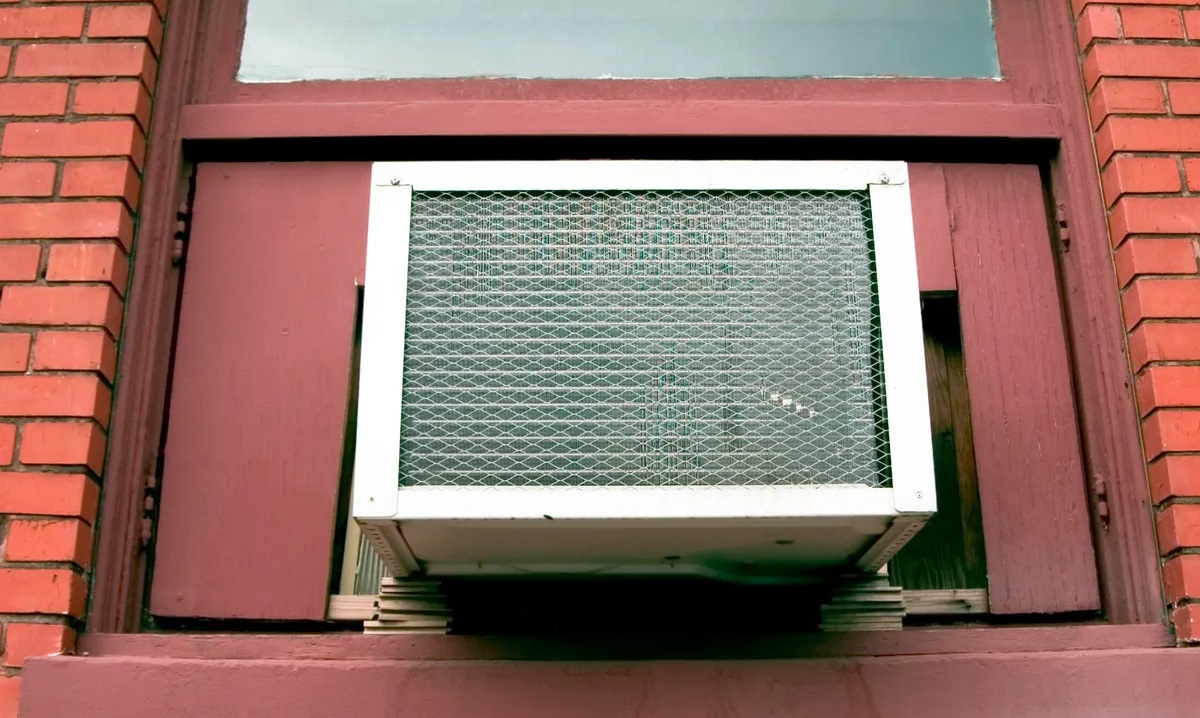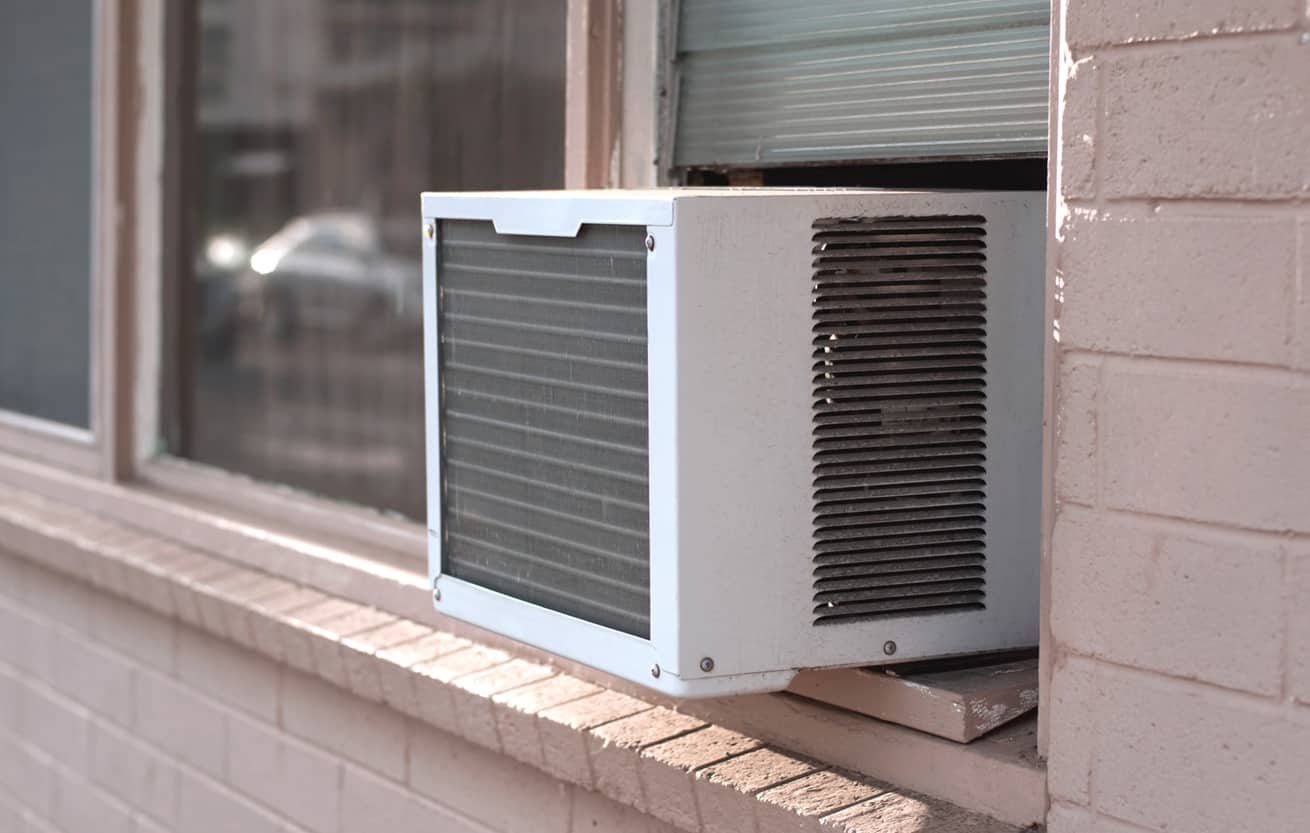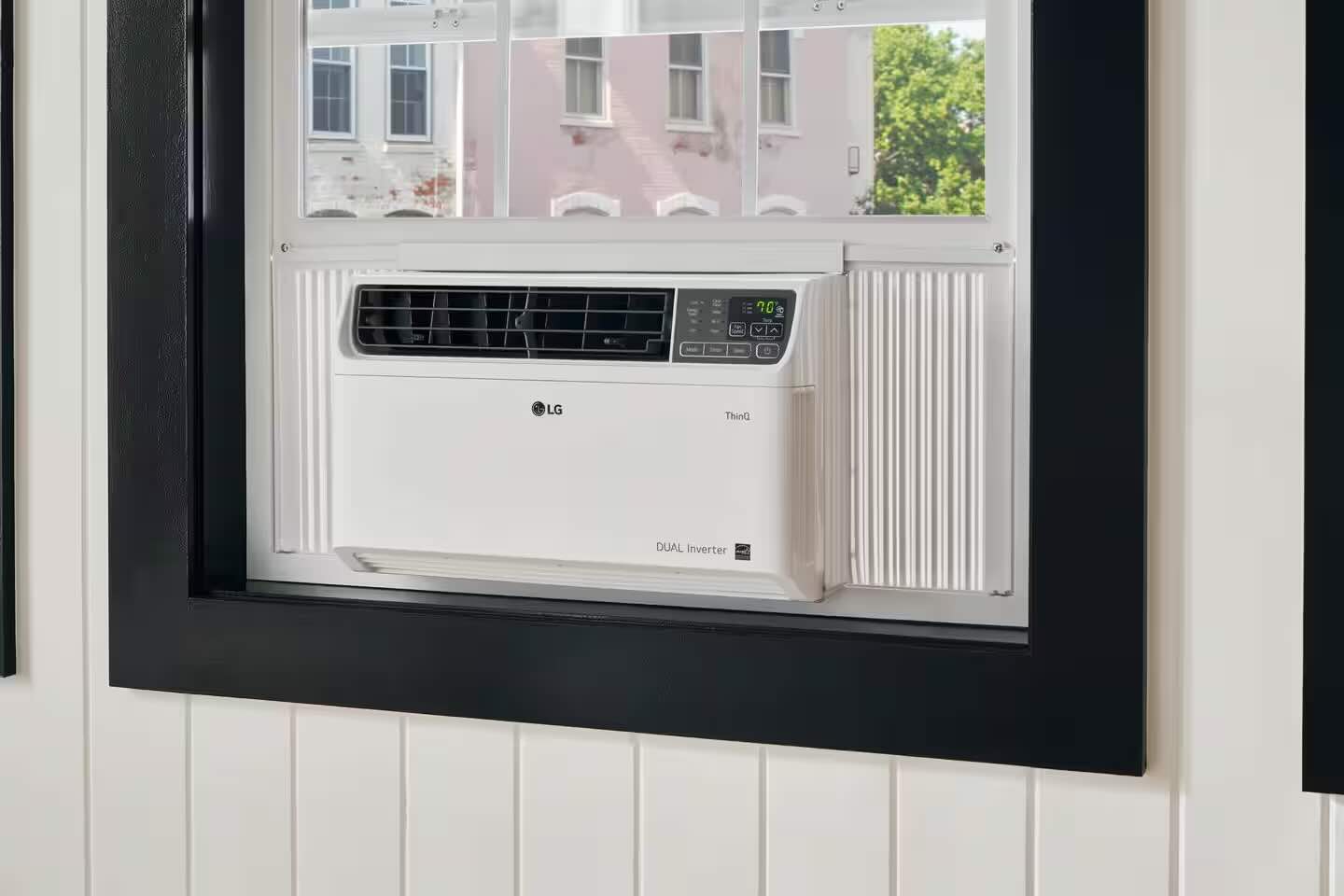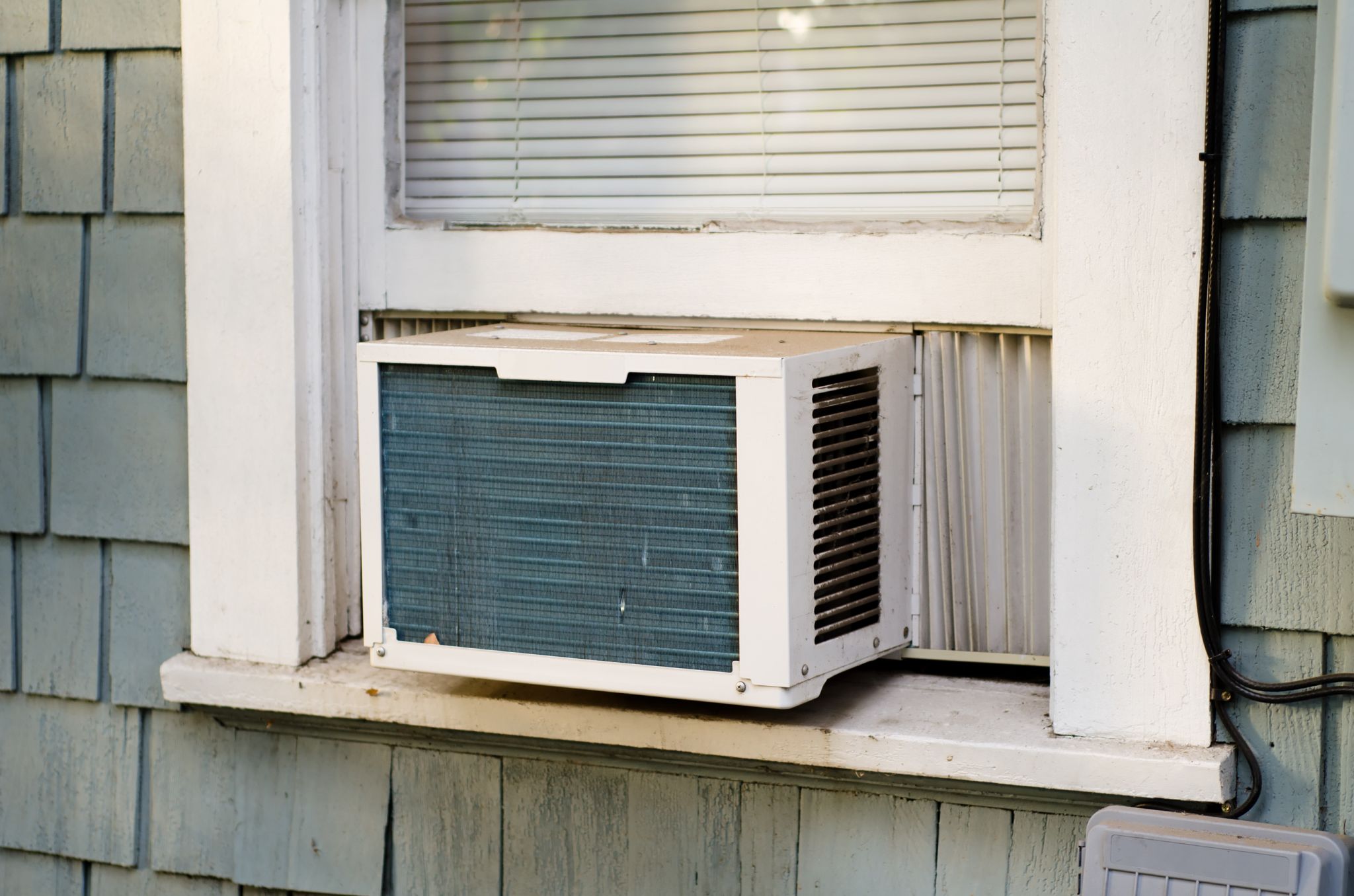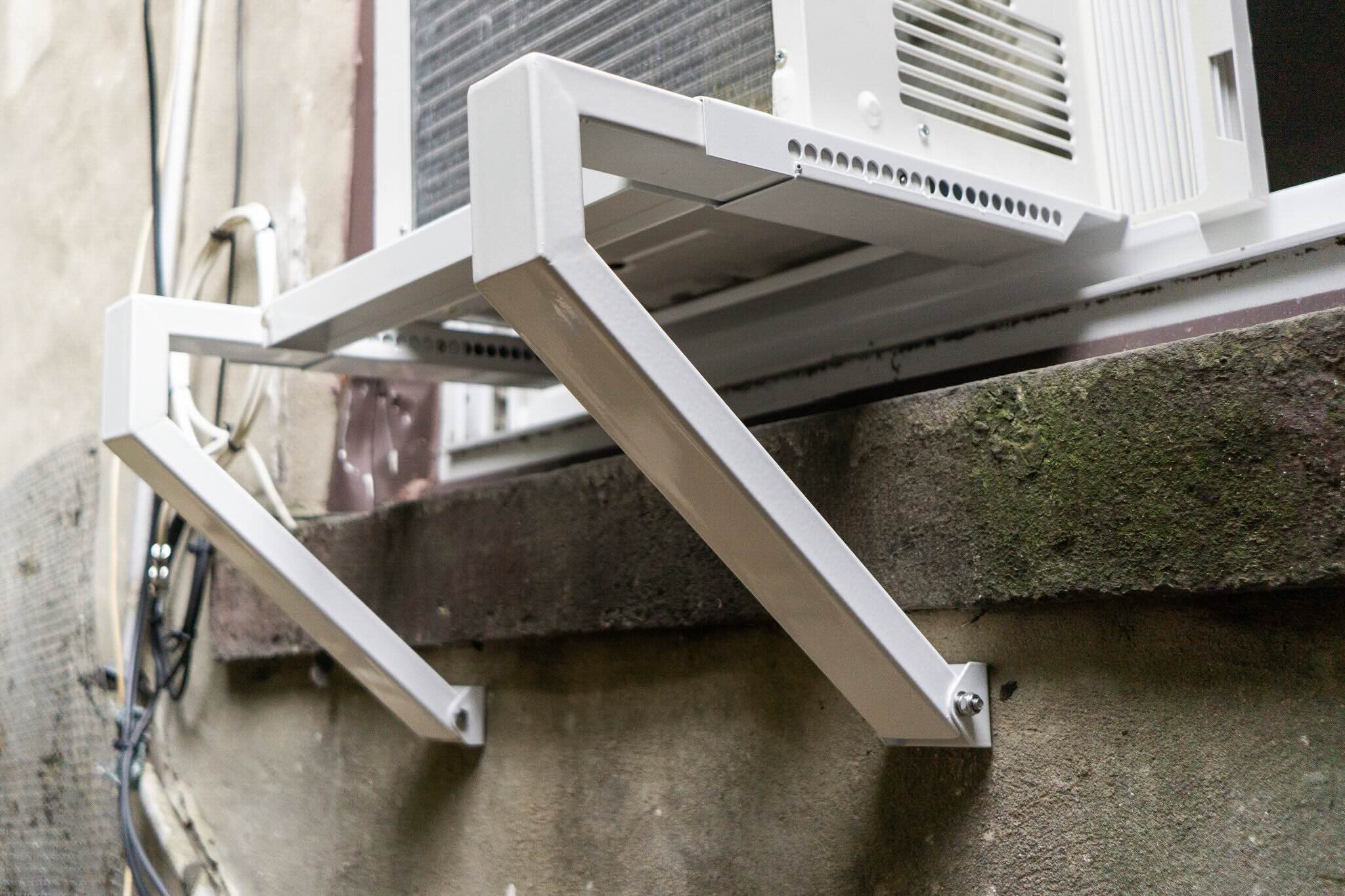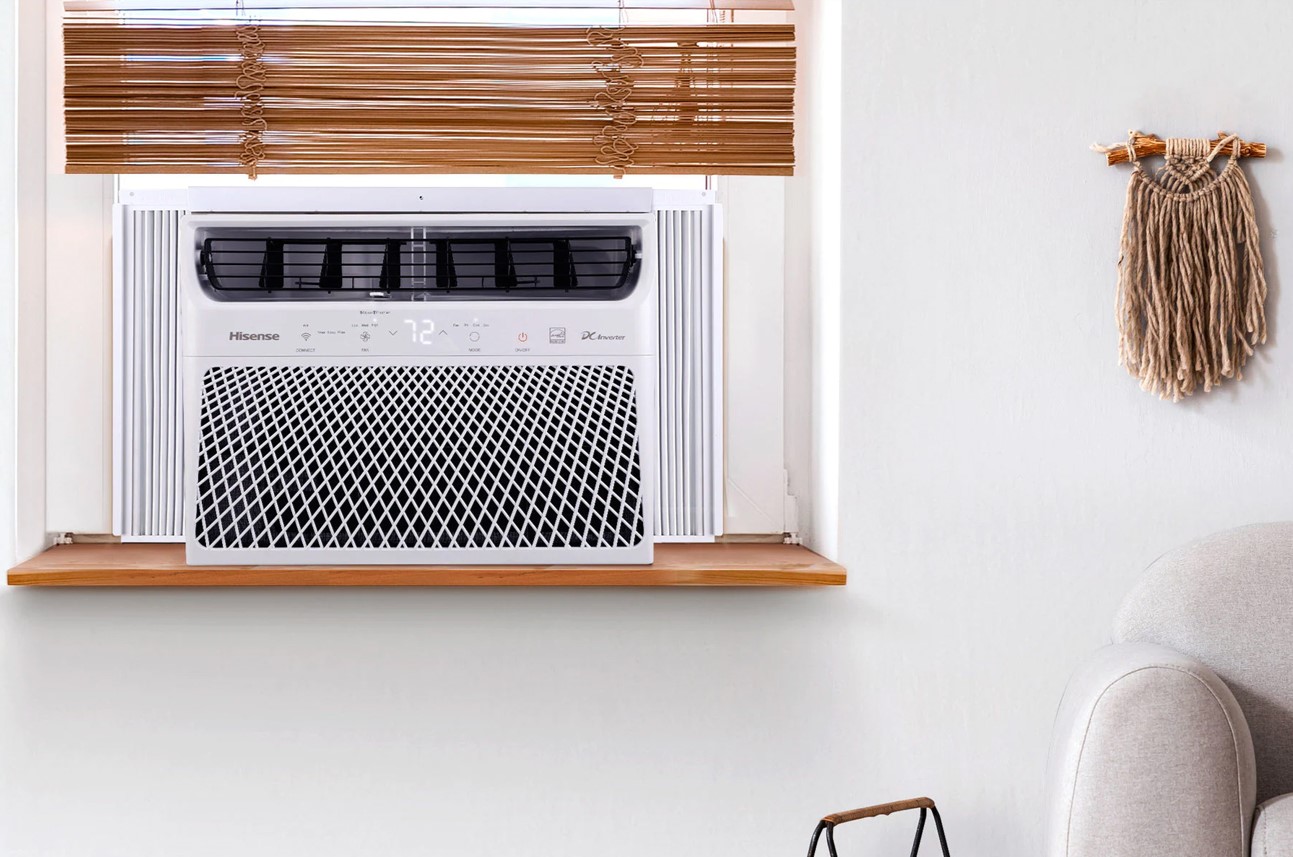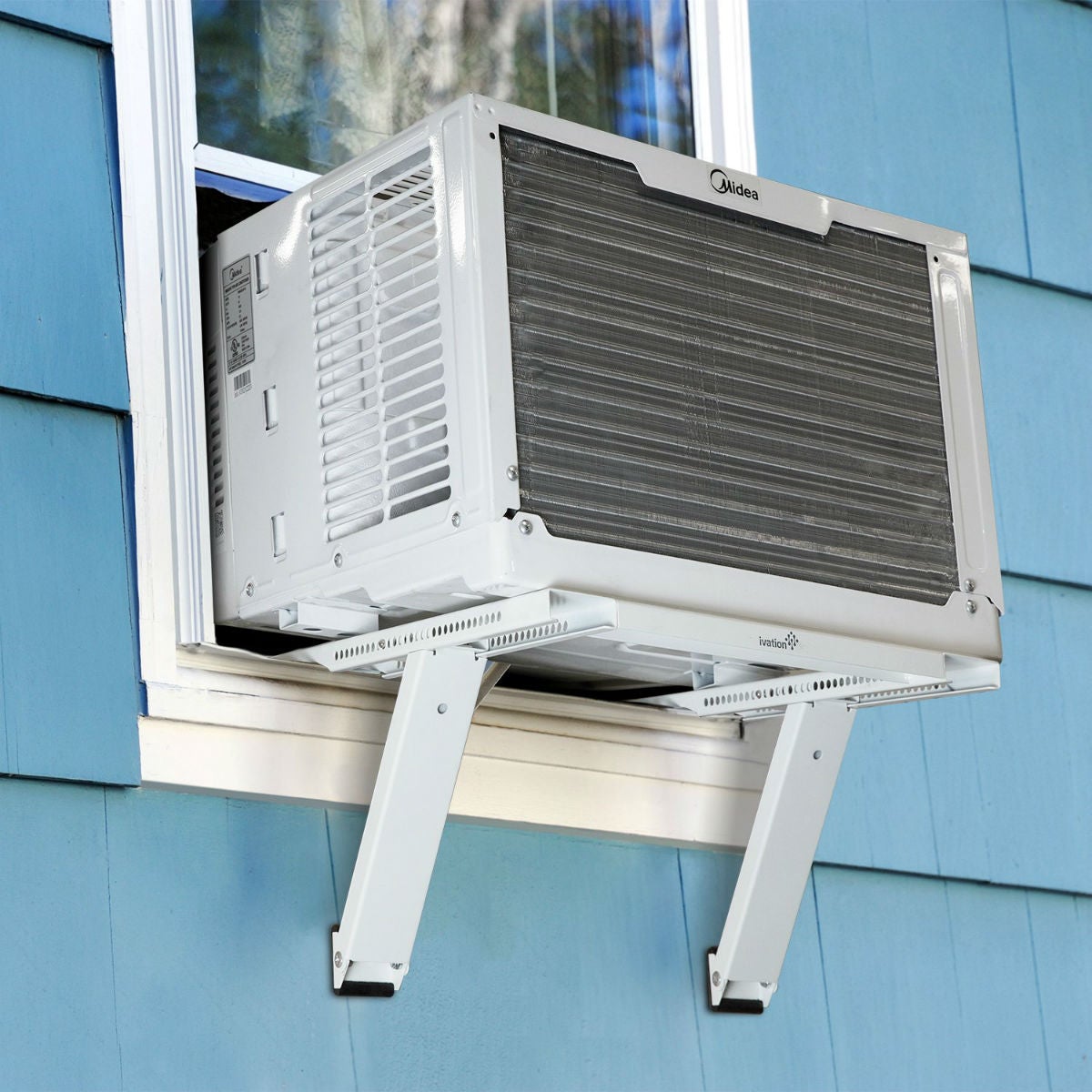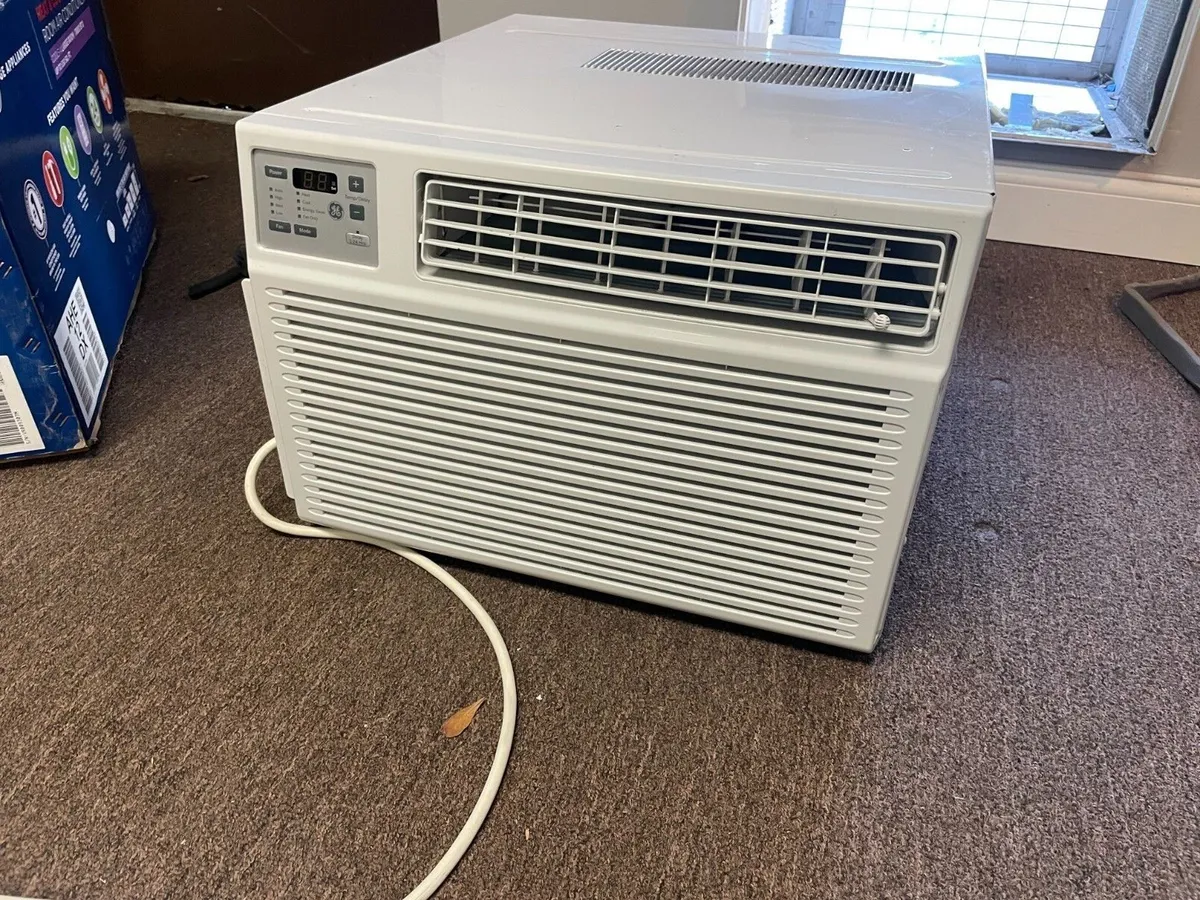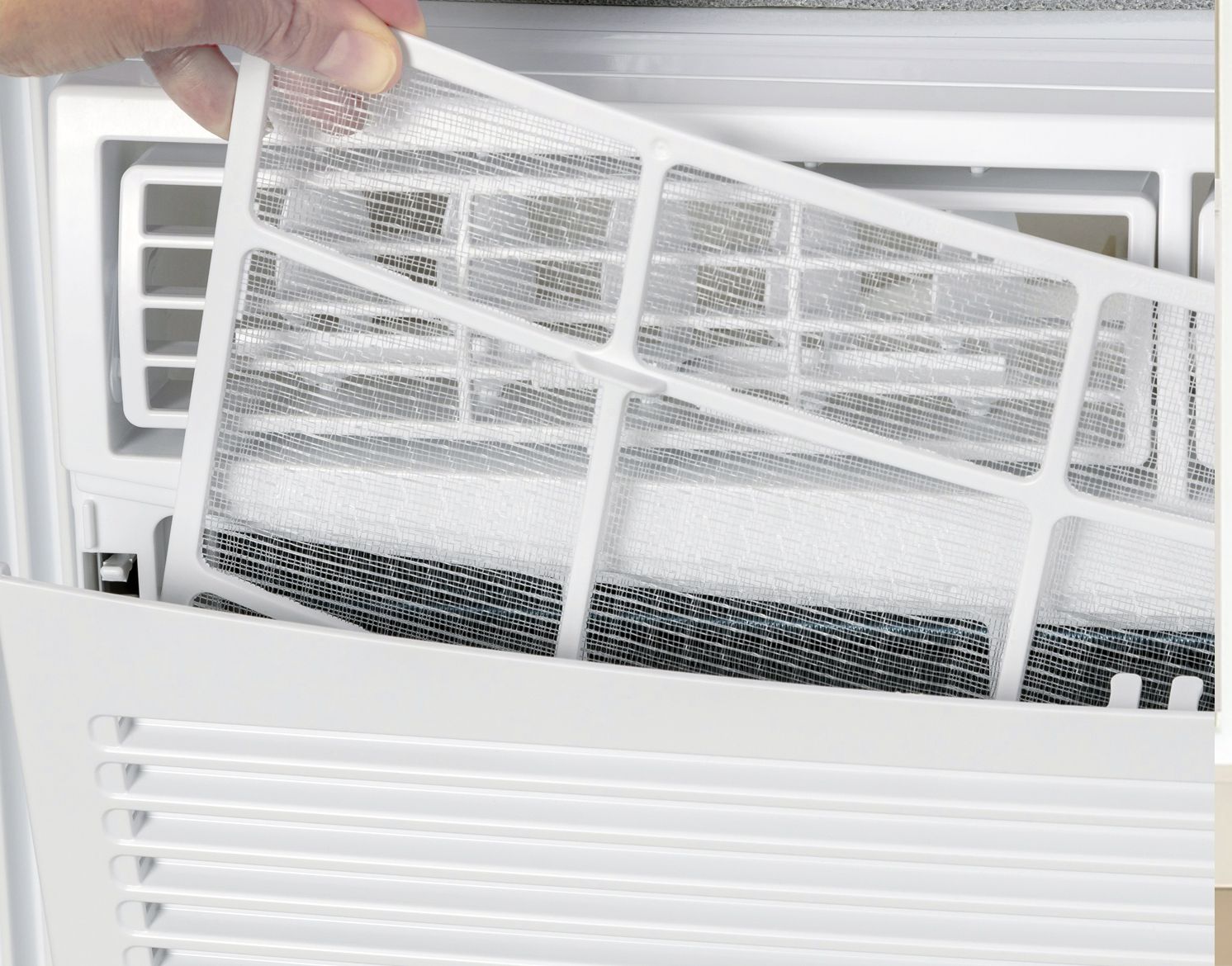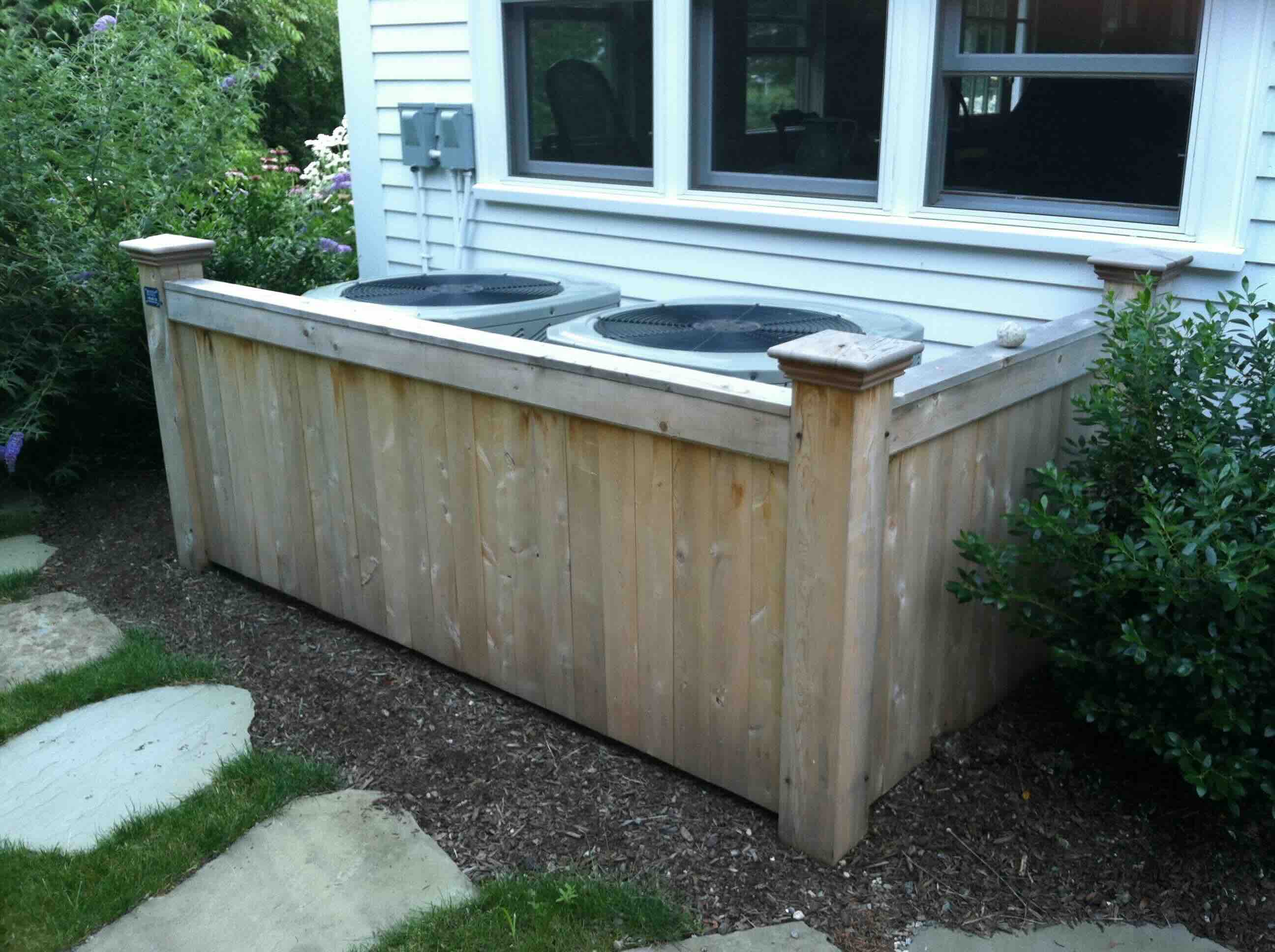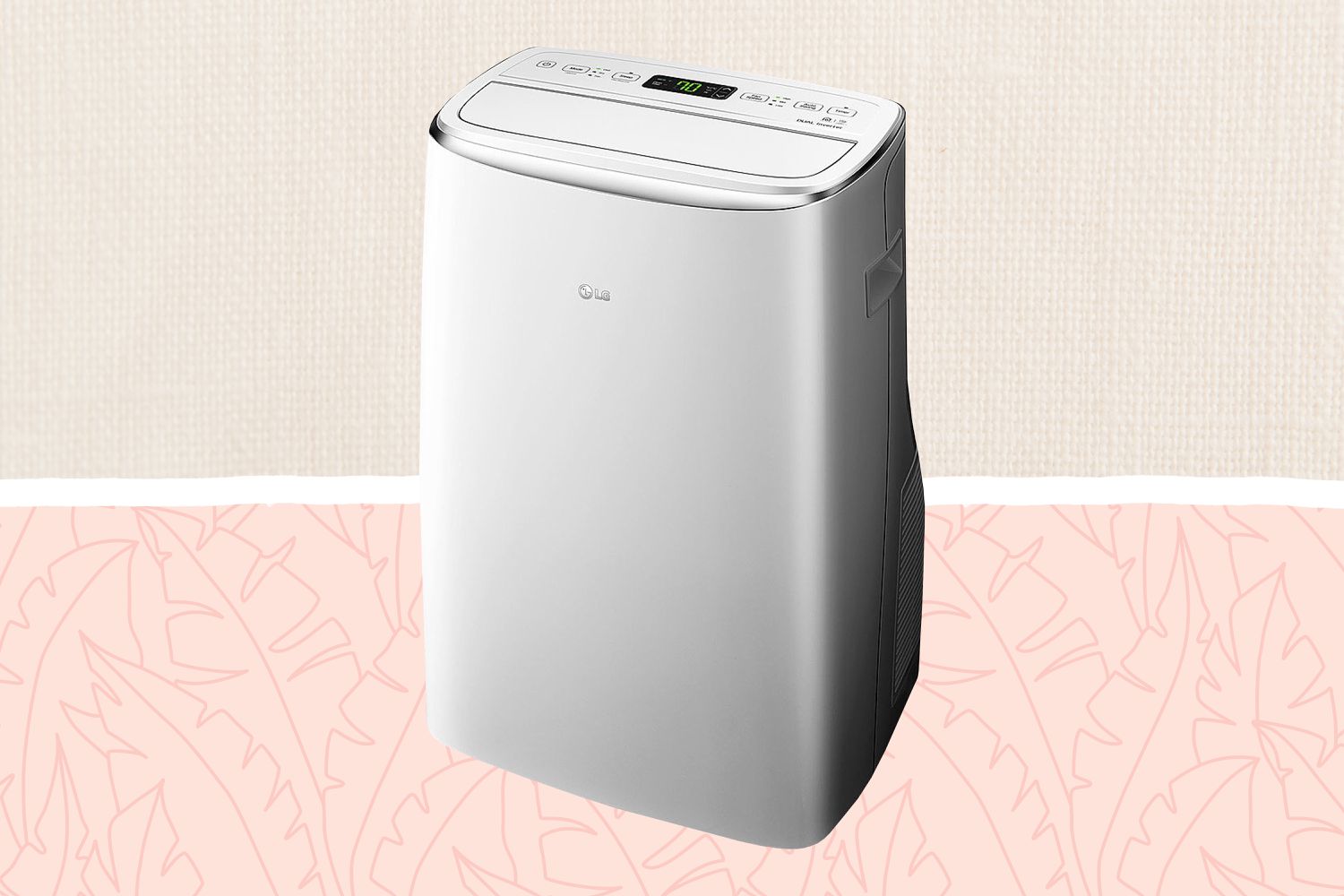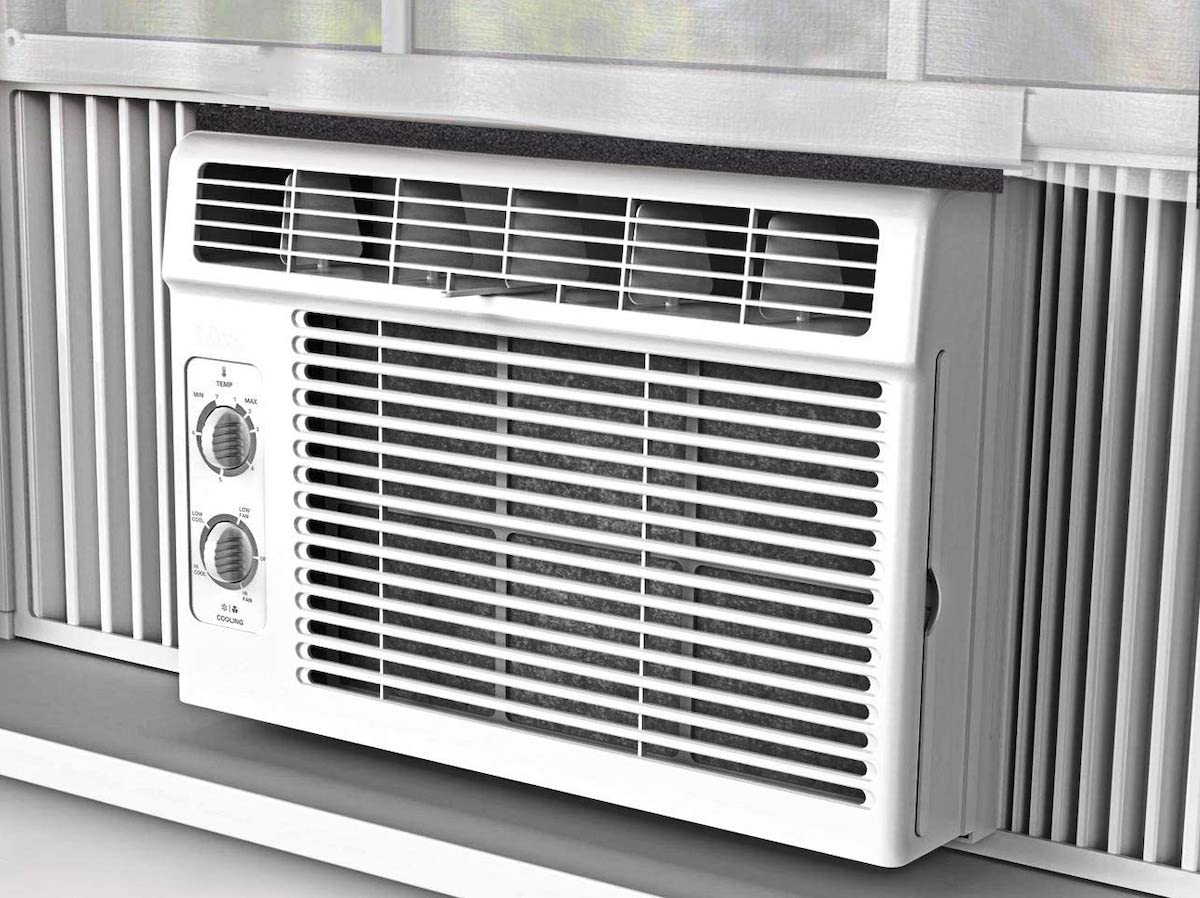Home>Home Maintenance>What Is A Window Air Conditioner
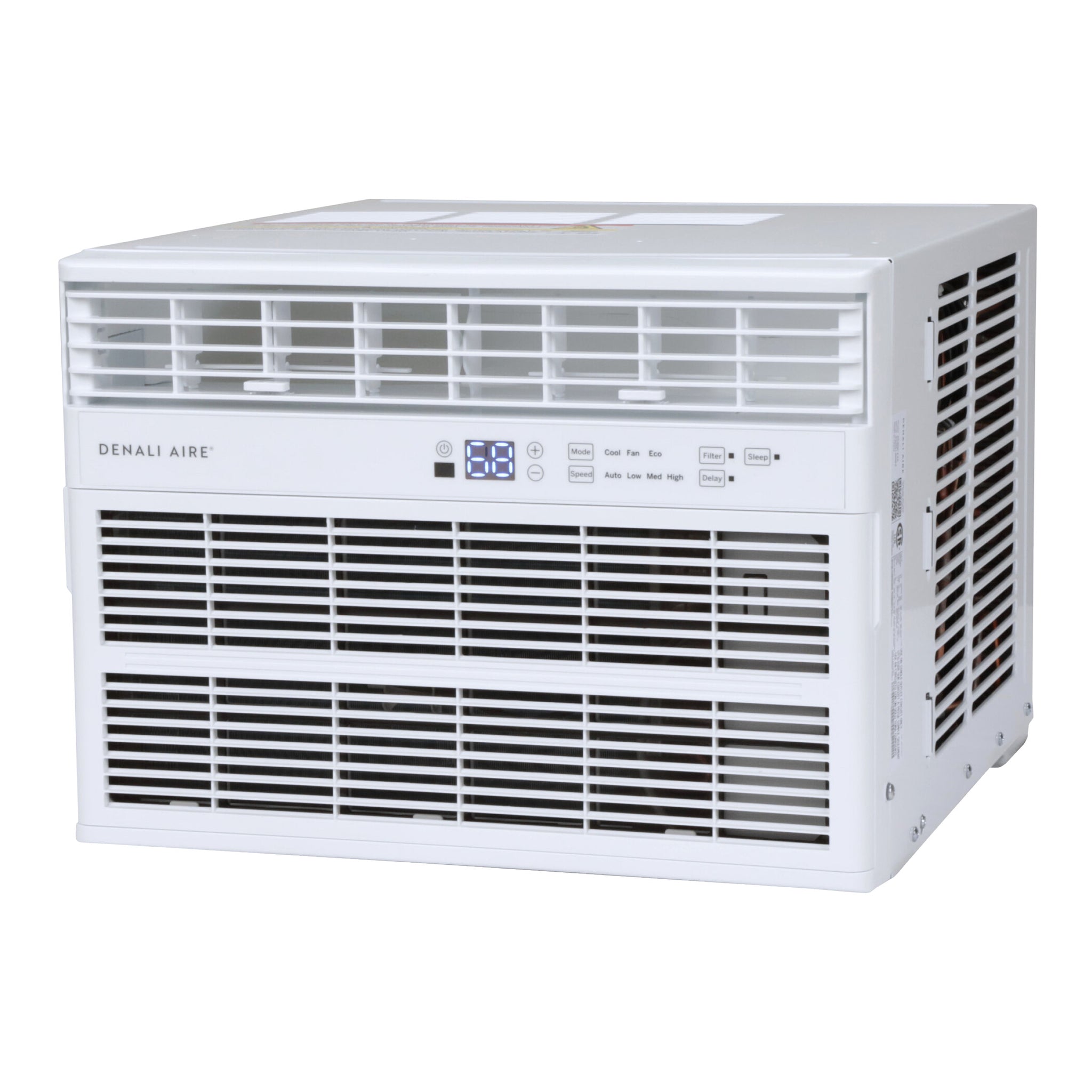

Home Maintenance
What Is A Window Air Conditioner
Modified: March 24, 2024
Discover the benefits and functions of a window air conditioner for your home maintenance. Stay cool and comfortable with this essential appliance.
(Many of the links in this article redirect to a specific reviewed product. Your purchase of these products through affiliate links helps to generate commission for Storables.com, at no extra cost. Learn more)
Introduction
Welcome to the world of home maintenance, where keeping your living space comfortable and well-functioning is of utmost importance. One crucial aspect of maintaining a comfortable home is ensuring proper temperature control, especially during sweltering summer months. This is where window air conditioners come into play.
Window air conditioners, also known as window AC units, are compact cooling systems that are designed to be installed in a window or a wall opening. These popular appliances have been providing relief from the heat for decades and have become a staple in many homes and apartments.
With their ability to cool a specific area effectively, window air conditioners offer a convenient and cost-effective cooling solution for small to medium-sized spaces, such as bedrooms, living rooms, and home offices. Additionally, they are relatively easy to install and require minimal maintenance.
In this comprehensive guide, we will explore the ins and outs of window air conditioners, including how they work, their benefits and drawbacks, factors to consider before purchasing one, installation guidelines, maintenance tips, troubleshooting common issues, and the energy efficiency and cost savings they provide.
So, if you’re considering investing in a window air conditioner or already have one, this guide is here to help you make the most of this essential home appliance. Let’s dive in and discover all you need to know about window air conditioners.
Key Takeaways:
- Stay cool and save money with a window air conditioner! It’s a budget-friendly, energy-efficient option for small to medium spaces, but be mindful of installation limitations and maintenance needs.
- Understanding how window air conditioners work can help you appreciate their effectiveness. They offer zoned cooling, easy installation, and cost-effective comfort, but consider potential noise and view obstructions.
Read more: What Is The Quietest Window Air Conditioner
How Does a Window Air Conditioner Work?
Understanding the working mechanism of a window air conditioner can help you appreciate its effectiveness in cooling your living space. While the exact components may vary slightly between models, the basic functionality remains the same.
A window air conditioner operates on a closed-loop refrigeration system that consists of four key components: a compressor, an evaporator, a condenser, and an expansion valve. These components work together to cool and dehumidify the air.
When you turn on the window air conditioner, the compressor initiates the cooling process by compressing a refrigerant gas, typically Freon or a similar coolant. This compression raises the temperature and pressure of the refrigerant.
The high-pressure refrigerant then passes through a series of coils in the condenser located on the outdoor side of the unit. As the hot refrigerant flows through these coils, it releases heat to the outside air, rapidly cooling down and transforming into a high-pressure liquid.
The liquid refrigerant moves to the evaporator, located on the indoor side of the unit. As it enters the evaporator, the pressure of the refrigerant drops, causing it to evaporate into a low-pressure gas.
Simultaneously, a fan in the unit draws warm indoor air through the evaporator coils. The evaporating refrigerant absorbs the heat from the incoming air, cooling it down in the process. The cooled air is then pushed back into the room through the unit’s front grille.
During this cooling process, the window air conditioner also dehumidifies the air. As warm, humid air passes through the evaporator coils, the moisture condenses and collects in a drain pan or is expelled outside through a drain tube.
The refrigerant, having absorbed heat and moisture, returns to the compressor to restart the cycle. This continuous process ensures a steady supply of cool and dehumidified air in your living space.
In addition to the main cooling components, window air conditioners also have air filters that capture dust, pollen, and other particles in the air. Regular cleaning or replacement of these filters is essential for maintaining optimal performance.
Now that you understand the inner workings of a window air conditioner, let’s explore its benefits and drawbacks in the next section.
Benefits of Window Air Conditioners
Window air conditioners offer numerous advantages that make them a popular cooling solution for many households. Here are some key benefits to consider:
- Cost-effective: Window air conditioners are generally more affordable compared to central air conditioning systems. They are a budget-friendly option for those looking to cool a specific room or area without investing in a large-scale cooling system.
- Energy-efficient: With advancements in technology, many window air conditioners come with energy-saving features, such as programmable thermostats and sleep modes. These features allow you to customize your cooling preferences and maximize energy efficiency, resulting in potential cost savings on your energy bills.
- Space-saving: As the name suggests, window air conditioners are designed to fit into a window or wall opening, saving valuable floor space in your home. They are a great solution for apartments or rooms where space is limited.
- Easy installation: Compared to other cooling systems, window air conditioners are relatively easy to install. With basic tools and some DIY skills, you can have your unit up and running in no time. Just make sure to carefully follow the manufacturer’s installation instructions.
- Zone cooling: Window air conditioners allow you to cool specific areas or rooms, providing personalized comfort. If you spend most of your time in a particular room, you can focus the cooling power where it’s needed most, saving energy by not cooling unoccupied spaces.
- Portability: Window air conditioners are portable devices that can be easily removed and relocated as needed. If you move to a different home or simply want to transfer the unit to another room, it can be done without much hassle.
- Low maintenance: Maintaining a window air conditioner is relatively straightforward. Regular cleaning of the air filters and periodic cleaning of the coils will help keep the unit running efficiently. Additionally, most window air conditioners come with a filter indicator that alerts you when it’s time to clean or replace the filter.
These benefits make window air conditioners a practical and cost-effective solution for cooling small to medium-sized spaces. However, they do come with a few drawbacks, which we’ll explore next.
Drawbacks of Window Air Conditioners
While window air conditioners offer several benefits, it’s important to consider their drawbacks before making a purchasing decision. Here are some potential downsides to be aware of:
- Limited cooling capacity: Window air conditioners are typically designed to cool a single room or a small area. If you have a large living space or multiple rooms that need cooling, you might need multiple units or consider alternative cooling options.
- Installation limitations: Since window air conditioners are installed in a window or wall opening, they might not be suitable for all types of windows or homes with aesthetic restrictions. Additionally, if you’re renting a property, you may need to get written permission from the landlord before installing a window unit.
- Noisy operation: Some window air conditioners can be noisy during operation, especially older models. If you’re sensitive to noise or plan to use the unit in a bedroom or office space, look for models with lower noise levels or consider alternative cooling systems that offer quieter operation.
- Obstructed view: Installing a window air conditioner can obstruct your view from the window, limiting natural light and the ability to see outside. If a clear view is essential to you, consider other cooling options, such as portable air conditioners or ductless mini-split systems.
- Energy consumption: While window air conditioners have become more energy-efficient in recent years, they can still consume a significant amount of electricity, especially if used for long periods or in high-temperature conditions. This can result in higher energy bills compared to more efficient cooling systems, such as central air conditioning or ductless mini-splits.
- Inconsistent cooling: Window air conditioners are designed to cool a specific area, which means that the temperature may vary throughout your home. If you’re looking for consistent cooling throughout your entire living space, you may need to consider alternative cooling solutions, such as central air conditioning.
- Limited functionality: Window air conditioners primarily focus on cooling and dehumidifying the air. They may lack additional features such as air purifiers, heat modes, or advanced air filtration systems that are offered by other cooling options. If you require more versatile functionality, explore alternative cooling systems.
Considering these drawbacks alongside the benefits will help you determine if a window air conditioner is the right choice for your specific cooling needs. Next, let’s dive into the factors you should consider before buying a window air conditioner.
Factors to Consider Before Buying a Window Air Conditioner
Before purchasing a window air conditioner, it’s important to consider several factors to ensure you choose the right unit for your specific needs. Here are some key factors to keep in mind:
- Cooling capacity: The cooling capacity of a window air conditioner is measured in British Thermal Units (BTUs). It’s crucial to determine the appropriate BTU rating for your space. A unit with insufficient BTUs will struggle to cool the room effectively, while an oversized unit may cycle on and off frequently, leading to inefficiency. Consider factors such as room size, insulation, ceiling height, and the number of occupants when determining the ideal cooling capacity.
- Energy efficiency: Look for window air conditioners with a high Energy Efficiency Ratio (EER) or a good Seasonal Energy Efficiency Ratio (SEER) rating. Higher EER or SEER ratings indicate better energy efficiency, which can result in lower energy consumption and reduced operating costs over time.
- Noise level: If noise is a concern, look for window air conditioners with low noise levels. Check the manufacturer’s specifications or reviews to ensure that the unit operates quietly, especially if you plan to use it in a bedroom or office space.
- Installation requirements: Consider the installation requirements and limitations of your home. Measure the window or wall opening to ensure the unit will fit properly. Additionally, check if any additional support or brackets are needed for installation, and if you have the necessary tools and skills to complete the installation process.
- Features and controls: Consider what features are important to you. Some window air conditioners offer features such as programmable timers, remote controls, sleep modes, fan speeds, and adjustable thermostats. Evaluate which features align with your preferences and convenience.
- Maintenance: Look for window air conditioners with easy-to-access filters that can be cleaned or replaced easily. Consider the ease of maintenance and whether the unit has features such as filter indicators to remind you when it’s time to clean or replace the filter.
- Warranty and customer support: Check the warranty coverage and customer support provided by the manufacturer. A longer warranty can provide peace of mind and protection against any potential defects or issues with the unit.
- Budget: Set a budget for your window air conditioner purchase. Consider the initial cost, as well as potential long-term energy savings and maintenance costs. It’s important to find a balance between cost and the desired features and performance of the unit.
By taking these factors into consideration, you’ll be able to select a window air conditioner that meets your cooling needs and provides optimal comfort in your space. Once you’ve made a purchase, proper installation is key, so let’s dive into the installation guide for window air conditioners next.
When installing a window air conditioner, make sure to properly insulate the space around the unit to prevent hot air from entering and cool air from escaping. This will help improve the efficiency of the air conditioner and save energy.
Installation Guide for Window Air Conditioners
Installing a window air conditioner requires careful attention to ensure proper functionality and a secure fit. Follow these steps to successfully install your unit:
- Choose the installation location: Select a window or wall opening that is close to an electrical outlet and provides proper ventilation. Make sure the area is clear of obstructions and allows for easy access to the unit.
- Measure the opening: Measure the width and height of the window or wall opening to determine the size of the unit needed. Check the dimensions of the air conditioner and make sure it will fit properly in the opening.
- Prepare the window: Clean the window or wall opening to ensure a secure and clean surface to work with. Remove any debris or obstructions that could hinder the installation process.
- Mount the brackets: Depending on your specific model, you may need to mount support brackets to ensure stability. Follow the manufacturer’s instructions to securely attach the brackets to the window frame or wall opening.
- Install the unit: With the help of a friend or family member, carefully lift the window air conditioner and slide it into the opening. Make sure it is centered and level within the opening. The bottom of the unit should be tilted slightly downward to allow for proper drainage.
- Secure the unit: Once the unit is properly positioned, use the provided hardware to secure it in place. This may involve attaching screws or locking the unit into the brackets. Ensure that the unit is firmly secured to prevent it from shifting or falling.
- Seal the gaps: Use weatherstripping or insulation materials to seal any gaps or openings around the unit. This will prevent air leakage and improve energy efficiency.
- Plug in the unit: Finally, plug the window air conditioner into a nearby electrical outlet. Double-check that the unit is receiving power and functioning properly.
- Test the unit: Turn on the unit and test its cooling function. Adjust the temperature settings and fan speed as desired. Check for any unusual noises or vibrations that may indicate installation issues.
- Read the user manual: Familiarize yourself with the specific operational and maintenance instructions provided by the manufacturer. This will help you safely and effectively use your window air conditioner.
It’s important to note that the installation process may vary depending on your specific window air conditioner model and the type of window or wall opening you have. Always refer to the manufacturer’s instructions for detailed guidance tailored to your unit.
With proper installation complete, it’s time to learn how to maintain your window air conditioner for optimal performance. Let’s explore some maintenance tips in the next section.
Maintenance Tips for Window Air Conditioners
Maintaining your window air conditioner is essential to ensure its longevity and efficient performance. By following these maintenance tips, you can keep your unit running smoothly:
- Regularly clean or replace the air filter: Depending on the frequency of use, clean or replace the air filter every 1-2 months. A dirty filter can restrict airflow and reduce cooling efficiency. Follow the manufacturer’s instructions for cleaning or replacing the filter.
- Clean the condenser coils: Over time, the condenser coils can accumulate dirt and debris, affecting the unit’s cooling ability. Use a soft brush or vacuum cleaner to gently remove any buildup from the coils. Take care not to damage the delicate fins.
- Keep the unit and surrounding area clean: Keep the exterior of the unit clean by wiping it down periodically. Remove any leaves, branches, or debris that may collect around the unit, as they can obstruct airflow and hinder performance.
- Check and clean the drainage system: Window air conditioners remove moisture from the air, and it collects in a drain pan or drains outside through a tube. Regularly check the drain pan for any standing water and clean it if necessary. Ensure that the drain tube is unobstructed and allows proper drainage.
- Inspect the insulation and weatherstripping: Check the insulation and weatherstripping around the unit for any wear or damage. Replace any damaged insulation to maintain proper temperature control and energy efficiency.
- Inspect the power cord and electrical connections: Regularly inspect the power cord for any fraying or damage. Ensure that the electrical connections are secure and that there are no exposed wires. If you notice any issues, contact a qualified technician for repairs.
- Trim vegetation around the unit: If plants or shrubs are growing near the unit, trim them to ensure proper airflow. Vegetation too close to the unit can obstruct the airflow and reduce efficiency.
- Use a cover during the off-season: If you won’t be using your window air conditioner during the colder months, consider covering it with a protective cover to prevent dust accumulation and protect it from the elements.
- Follow manufacturer’s maintenance guidelines: Always refer to the manufacturer’s maintenance guidelines provided in the user manual. They may have specific recommendations or additional steps for maintenance based on your specific model.
By following these maintenance tips, you can keep your window air conditioner in optimal condition, prolong its lifespan, and ensure efficient and effective cooling for years to come.
Unfortunately, issues may still arise with your window air conditioner. In the next section, we’ll discuss common troubleshooting steps for common problems.
Troubleshooting Common Issues with Window Air Conditioners
Window air conditioners, like any other appliance, can experience issues from time to time. Here are some common problems you may encounter with your unit and troubleshooting steps to help resolve them:
- Inadequate cooling: If the air conditioner is not providing sufficient cooling, check if the air filter is clean and free from dust and debris. Ensure that the unit is the correct size for the room and that there are no obstructions blocking the airflow. If the issue persists, consider cleaning the condenser coils or contacting a professional technician for further inspection.
- Unit not turning on: If the unit is not turning on, make sure it is properly plugged in and that the electrical outlet is functioning. Check if the power cord is damaged or the circuit breaker has tripped. If necessary, test the outlet with another device to ensure it is receiving power. If the problem persists, contact a qualified technician.
- Water leakage: If you notice water leaking from the unit, check if the drain pan or drain tube is clogged. Clean them to ensure proper drainage. Additionally, make sure the unit is properly tilted downward to allow for efficient drainage. If the issue continues, seek professional help to inspect for any underlying problems.
- Unusual noises: If you hear strange noises, such as buzzing, rattling, or squealing, it may indicate a loose or damaged component. Turn off the unit and inspect it for any loose parts or debris. If you’re unable to identify the source of the noise, it’s best to contact a professional technician for further evaluation and repair.
- Foul odors: If there is a foul smell coming from the unit, it could be due to mold or mildew growth. Clean the air filter and evaporator coils to remove any buildup. You can also run the unit on fan mode with the air filter removed to help ventilate and freshen the air. If the odor persists, it’s advisable to seek professional assistance.
- Excessive vibration: Excessive vibration can be a sign of improper installation or a misaligned unit. Check if the unit is securely mounted and make sure it is level within the window or wall opening. If the vibration continues, it’s recommended to consult a professional technician to address the issue.
- Failure to cool evenly: If the cooling is uneven, check if there are any obstructions blocking the airflow, such as furniture or window coverings. Make sure the unit’s vents are not blocked. Consider using fans or adjusting the fan speed to promote better air circulation. If the problem persists, you may need to consult a professional for further diagnosis.
Remember, if you’re unsure or uncomfortable performing any troubleshooting steps, it’s always best to contact a qualified technician. They have the knowledge and expertise to diagnose and resolve more complex issues with your window air conditioner.
When it comes to energy efficiency and cost savings, window air conditioners have made significant strides. Let’s explore the energy efficiency and cost-saving benefits of using window air conditioners in the next section.
Energy Efficiency and Cost Savings with Window Air Conditioners
Window air conditioners have become increasingly energy-efficient over the years, providing significant cost savings for homeowners. Here are some ways in which these cooling units can help you save energy and reduce your utility bills:
- Energy-efficient models: Many manufacturers now offer window air conditioners that are designed with energy-saving features. These include programmable thermostats, sleep modes, and energy-saving settings that allow you to adjust the temperature and fan speed based on your cooling needs. By utilizing these features, you can optimize energy usage and reduce waste.
- Zoned cooling: Window air conditioners offer zoned cooling, allowing you to cool specific areas or rooms as needed. Instead of cooling your entire home, you can direct the cooling power to the rooms where you spend the most time. This targeted approach helps minimize energy consumption by avoiding unnecessary cooling in unoccupied spaces.
- Programmable timers: Many window air conditioners come with programmable timers that allow you to set specific operating schedules. This feature enables you to cool your space only when needed, reducing energy consumption during times when you’re not at home or during cooler parts of the day.
- Avoiding the need for central air conditioning: Window air conditioners provide a cost-effective alternative to central air conditioning. If you primarily use one or two rooms, investing in a window unit for targeted cooling can be more energy-efficient than cooling your entire home with a central AC system.
- Easy maintenance: Proper maintenance of your window air conditioner is crucial for optimal energy efficiency. Regularly clean or replace the air filters to ensure proper airflow. Clean the condenser coils to remove any buildup that can hinder cooling performance. By maintaining your unit, you can ensure it operates efficiently, reducing the energy required to cool your space.
- Cost-effective cooling solution: Window air conditioners are typically more affordable to purchase and install compared to central air conditioning systems or ductless mini-splits. The initial investment is lower, making them a cost-effective cooling solution for small to medium-sized spaces.
- Lower installation and maintenance costs: Installing and maintaining a window air conditioner is generally less costly compared to other cooling systems. The installation process is simpler, and maintenance expenses, such as replacing filters and cleaning coils, are minimal. This helps to reduce long-term expenses and increase cost savings.
To ensure maximum energy efficiency and cost savings, it’s essential to choose the right size window air conditioner for your space. An undersized unit will struggle to cool your space effectively, while an oversized unit may cycle on and off frequently, wasting energy.
When purchasing a window air conditioner, look for models with high Energy Efficiency Ratio (EER) or Seasonal Energy Efficiency Ratio (SEER) ratings. The higher the rating, the more energy-efficient the unit is. These ratings indicate the unit’s cooling output in relation to the amount of energy it consumes.
By utilizing energy-saving features, optimizing cooling settings, and properly maintaining your window air conditioner, you can enjoy both comfort and cost savings throughout the hot summer months.
As we conclude our comprehensive guide to window air conditioners, it’s important to remember that regular maintenance, prompt troubleshooting, and professional assistance when needed are essential for the long-term performance and longevity of your unit. Stay cool and comfortable in your home with the efficient and reliable cooling power of a window air conditioner.
Read more: How To Store A Window Air Conditioner
Conclusion
Window air conditioners are an integral part of home maintenance, providing efficient and cost-effective cooling for small to medium-sized spaces. With their compact design, ease of installation, and budget-friendly options, they have become a popular choice for homeowners and renters alike.
In this comprehensive guide, we’ve explored the inner workings of window air conditioners, their benefits and drawbacks, factors to consider before purchasing, installation guidelines, maintenance tips, troubleshooting common issues, and the energy efficiency and cost savings they offer.
By understanding how window air conditioners work, you can appreciate their effectiveness in cooling your space and creating a comfortable environment during hot summer months. We’ve also discussed the importance of choosing the right size unit, considering energy efficiency, and leveraging programmable features to optimize cooling and reduce energy consumption.
The installation guide has provided step-by-step instructions to help you properly install your window air conditioner for optimal performance. Additionally, we’ve covered essential maintenance tips to ensure the longevity of your unit and keep it running efficiently year after year.
In the troubleshooting section, we’ve discussed common issues that may arise with window air conditioners and provided practical steps to address them. However, it’s important to seek professional assistance when needed, especially for more complex problems or if you’re unsure about performing certain tasks.
Lastly, we’ve explored the energy efficiency and cost-saving benefits of window air conditioners. By making informed choices, following energy-saving practices, and maintaining your unit, you can enjoy cool and comfortable living spaces while keeping your energy bills under control.
So, whether you’re considering purchasing a window air conditioner or already have one installed, this guide has equipped you with the knowledge and insights needed to make the most of this essential home appliance.
Stay cool, comfortable, and energy-efficient with your window air conditioner, and remember to prioritize regular maintenance to ensure optimum performance. Here’s to a summer filled with refreshing indoor temperatures and a comfortable home environment!
Frequently Asked Questions about What Is A Window Air Conditioner
Was this page helpful?
At Storables.com, we guarantee accurate and reliable information. Our content, validated by Expert Board Contributors, is crafted following stringent Editorial Policies. We're committed to providing you with well-researched, expert-backed insights for all your informational needs.
